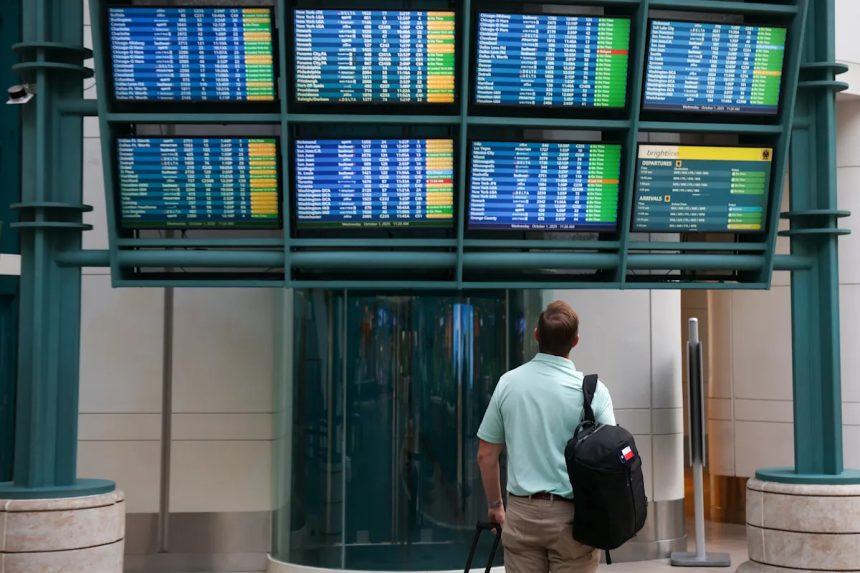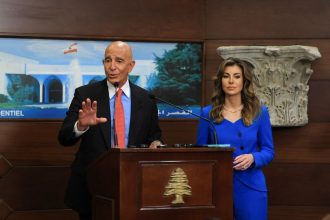ORLANDO, Fla. — The competition for airspace is just beginning as the space age kicks into high gear on the Space Coast.
At the center of it all is SpaceX, which seeks to bring its game-changing Starship to Florida but with a sobering cost, delaying as many as 12,000 commercial flights each year.
The company’s target of as many as 120 Starship launches and landings annually could cause regular conflicts with takeoffs and landings at surrounding airports, according to two recent studies, the FAA’s draft Environmental Impact Statement, or EIS, for proposed SpaceX Starship activity from Kennedy Space Center and a similar EIS from the Department of the Air Force for a second Starship launch site at Cape Canaveral Space Force Station.
Elon Musk’s rocket company insists the concerns are overblown.
In a missive posted to its website, SpaceX said the so-called aircraft hazard areas defined in the studies “are extremely conservative by nature and are intended to capture a composite of the full range of worst-case outcomes, but not any single real-world operation.”
“SpaceX fully anticipates actual, implemented (aircraft hazard areas) will be both far smaller in geographic scope and far shorter in duration, validated by the robust flight data and heritage we are building.”
Even so, the Starship plans, along with the expanding calendar for other SpaceX craft and those from its competitors, ensure challenging times ahead as jumbo rockets and jumbo jets seek to share the skies.
“There’s a method and a reasoning for what they’re asking for,” said John Couluris, vice president of Blue Origin’s lunar permanence division, referring to SpaceX’s plans. “And so we all have to get used to this idea that the 2020s are going to be like — and the 2030s and beyond — it’s going to be beyond what we’ve been used to.”
Couluris said all commercial launch providers are figuring how to tackle sharing airspace — which can top 5,000 flights a day just in Florida — for what he believes will be the inevitable.
“This will be the first great international spaceport of scale,” he said.
SpaceX’s retort has some experience to support it.
When Falcon 9 began launching, its airspace and maritime closures were much larger, but they have since been reduced based on data from hundreds of launches. SpaceX noted Falcon 9 hazard areas for Starlink missions have shrunk by about 66% since 2022.
“SpaceX and FAA are applying the same proven approach to Starship,” SpaceX said, feeding information from each Texas launch that over time reduces the uncertainties.
SpaceX to date has flown 10 suborbital test launches of its massive rocket from its Texas site Starbase with flight No. 11 slated to go up as early as Oct. 13.
The company plans on shifting to two Space Coast launch sites once it begins flying operational missions. To support that, it’s building up a rocket manufacturing site at KSC that’s part of a $1.8 billion infrastructure investment.
“For the first time in history, there is a concerted effort from several fronts to break the mold of what’s considered conventionally possible when it comes to launching rockets,” SpaceX said in its post. “An effort to advance from the staid stance of slow and cumbersome operations when launching people and payloads to outer space into a dynamic future more akin to what hundreds of millions experience every year via the world’s airports.”
SpaceX is an order of magnitude ahead of other launch providers, seeking not only the 120 Starship launches from Florida but also planning to up its existing Falcon 9 cadence to as many as 156 missions per year.
Blue Origin for now is cleared to launch 12 times a year from their Cape Canaveral site, but that’s a number the company wants to grow while United Launch Alliance, Relativity Space, Stoke Space and other launch providers plan to ramp up as well.
Combined, the Space Coast could be approaching 400 rocket launches a year by the end of the decade.
“So we are going to have to rethink how we do things because it worked, and it worked for so long because the launch rate was so low. It’s not going to be that case anymore,” Couluris said, during a recent tour of his company’s Merritt Island facilities.
Since Starship is so much bigger than other rockets, and features an upper stage that would fly back for landings on the Space Coast, it has a twofold effect on air traffic delays.
Launches would necessitate airspace closures lasting from 40 minutes to two hours that could affect 133 to 400 aircraft during peak travel periods, or 8,800 commercial flights a year, the FAA report stated.
A bigger airspace concern is Starship’s return flights, which would force all airplanes heading south into Florida to avoid crossing the landing rocket’s flight path. That could mean delays for Orlando, Tampa, Miami, West Palm and Fort Lauderdale.
Starship landings would prompt a minimum of 40 minutes and up to one hour of airspace closure, affecting 400 to 600 commercial aircraft during peak daily travel periods, or from 8,800 to 13,200 per year, the FAA report stated.
Orlando airport officials said they are tracking the issue closely.
“The Greater Orlando Aviation Authority is fully supportive of Florida’s space program and the Federal Aviation Administration’s dual role to regulate and facilitate commercial space operations while providing the safest aerospace system in the world for aircraft to operate,” reads a statement from GOAA CEO Lance Lyttle. “We will continue to work closely with the FAA and commercial space operators to provide input regarding impacts to the National Airspace System, Orlando International Airport and Orlando Executive Airport.”
In addition to flight delays, Florida airports endured a complete ground stop after one of two explosive ends to test Starship flights from Texas earlier this year. In the wake of that incident, the Air Line Pilots Association weighed into the FAA with concerns about proximity.
The union, which represents nearly 80,000 pilots from 42 U.S. and Canadian airlines, said FAA Air Traffic Control’s ability to respond to such a “rocket anomaly needs to be further evaluated” and asked crews get more information about launches to make an “informed and timely decision about their need to potentially reject flight plans that route their aircraft underneath space vehicle trajectories.”
Already Orlando International Airport deals with airspace headaches. The U.S. Bureau of Transportation Statistics ranked Orlando 26th out of the top 30 U.S. airports for delays, noting its flights were on schedule 74.08% of the time.
“This is a real concern, but I always want to act by fact,” said U.S. Rep. Mike Haridopolos, a Republican who represents the Space Coast and is chair of the House Space and Aeronautics Subcommittee. “I’ve had long sit downs with both NASA and the private sector about what will the impact be.”
He noted that similar concerns arose during the days of Mercury and Apollo.
“We all know that Starship is a much bigger vessel, and we want to make sure there are safety concerns met,” Haridopolos said. “And we’re going to make those decisions as they come, but we’re going to base it on fact, and that’s why we’ve asked people come and give their opinion and be very transparent about those issues.”
He expects SpaceX to work with federal agencies including the FAA to find the right path forward.
“They still have a long way to go before they get here to Florida, and when they do get here to Florida, we’re going to do it the smart way and the safe way,” Haridopolos said.









